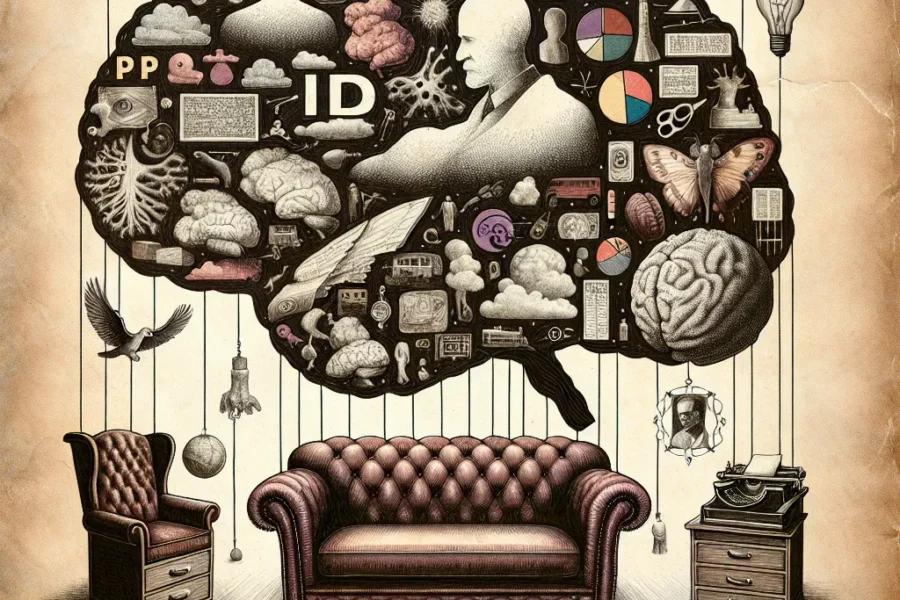Personality testing has long been a focal point of psychological assessment, with its origins dating back to the early 20th century. Over time, these tests have evolved significantly, adapting to new scientific discoveries, societal changes, and advancements in technology. The continuous evolution of personality testing reflects the dynamic nature of the human personality itself and our enduring quest to understand it better.
The Early Days of Personality Testing
The inception of personality testing is often linked to the work of Carl Jung and Sigmund Freud, whose theories on personality and psychodynamics laid the groundwork for the first formal assessments. The 1920s saw the emergence of one of the first personality inventories, the Woodworth Personal Data Sheet, designed to identify soldiers at risk for shell shock. This set the stage for the systematic exploration of personality traits.
The Rise of Self-Report Inventories
One of the most significant milestones in personality testing was the development of self-report inventories. The Minnesota Multiphasic Personality Inventory (MMPI), introduced in 1943, was pioneering in this area. Unlike its predecessors, the MMPI offered a quantifiable approach to understanding personality through a series of statements that individuals could agree or disagree with.
Furthering this tradition, the 1960s brought about the Five-Factor Model, also known as the Big Five, which distilled personality into five core traits: openness, conscientiousness, extraversion, agreeableness, and neuroticism. Tools like the NEO Personality Inventory operationalized this model, offering deeper insights into the human psyche.
Projective Tests and Their Discontents
Simultaneously, projective tests like the Rorschach Inkblot Test and the Thematic Apperception Test gained popularity. These tests were based on the idea that individuals project their personality onto ambiguous stimuli. However, the validity and reliability of projective tests have long been debated, leading to a gradual decline in their use in favor of more empirically supported methods.
The Technological Revolution
The dawn of the digital age brought unprecedented changes to personality testing. Online assessments became commonplace, offering the potential for wider reach and easier administration. Algorithms and artificial intelligence began to play a role in scoring and interpreting tests, increasing the efficiency with which results could be processed.
The introduction of gamified assessments and interactive tools has also revolutionized the field. These cutting-edge tests aim to assess personality in a more engaging and less transparent way, ostensibly reducing the likelihood of manipulation and response bias.
Contemporary Validity Concerns
While advancements have streamlined personality testing, they’ve also brought validity and privacy concerns to the forefront. The rise of social media and big data allows for a form of “passive” personality assessment, where individuals’ online behaviors can predict personality traits. This has prompted discussions around the ethical implications of such data usage and the accuracy of inferences drawn from digital footprints.
The Genetic and Neurobiological Perspective
Recent research into the neurobiological and genetic underpinnings of personality promises to reshape our understanding of personality tests. Brain imaging technologies and genetic analyses are being used to explore the biological bases of personality traits, offering the potential to complement traditional psychometric assessments.
The integration of this biological data may help to create a more comprehensive picture of personality and potentially improve the predictive power of personality assessments in real-world settings. This research is still in its infancy, but it represents an exciting frontier in the evolution of personality testing.
Predictive Analytics and the Workplace
In the realm of human resources, personality testing has taken on a new role. Businesses increasingly rely on predictive analytics to ascertain the fit of potential employees. Tools that assess personality traits are being used alongside cognitive ability tests to predict job performance, turnover, and cultural fit. As a result, the development of tests that are valid predictors of work-related behaviors has gained momentum.
The Future of Personality Testing
Looking forward, the future of personality testing is likely to be marked by increased personalization and precision. Longitudinal studies and adaptive tests capable of measuring changes in personality over time are becoming more prevalent. With the ongoing quest for greater accuracy, the incorporation of biometrics and machine learning could make tests not only more engaging but also more resistant to faking.
Moreover, the cross-cultural applicability of personality tests is an area ripe for exploration. As the world becomes more interconnected, creating tests that are culturally sensitive and universally applicable is a significant challenge that researchers and practitioners must face.
Conclusion
The evolution of personality testing has been a journey of continuous refinement, innovation, and debate. It reflects our enduring fascination with the complexities of human behavior and our desire to quantify and understand it. From the rudimentary tests of the early 20th century to the sophisticated assessments of today, personality testing has transformed in its methods, reach, and impact.
As we step into the future, the field remains poised for further evolution. The integration of biological data, the ethical use of big data, the refinement of predictive analytics, and the quest for cross-cultural relevance are all areas of potential advancement. The symphony of science, technology, and psychological insight continues to play on, ensuring that the evolution of personality testing remains an enthralling subject of study and application for years to come.



Leave a Comment